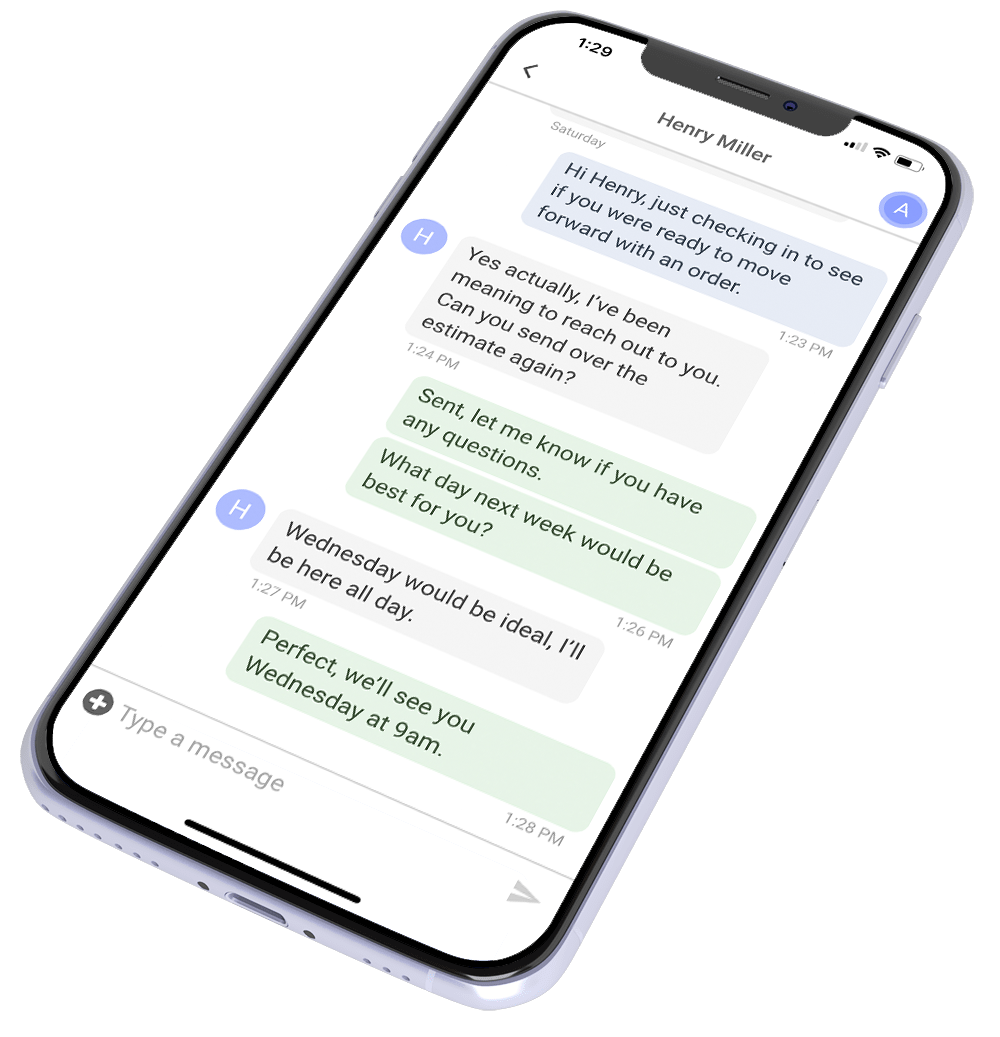Read on to discover why roofers stick with roofing CRMs that don’t work… and how to kick them to the curb.
Have you ever stayed in a relationship when you know you should leave? Then you know firsthand the dangers of the sunk cost fallacy. And it’s the same reason why you’re probably stuck using a roofing CRM that’s not working for your business.
Here’s how it works…
The Sunk Cost Fallacy
“Don’t cling to a mistake just because you spent a lot of time making it.”
― Aubrey de Grey
The sunk cost fallacy is when you stick with something—maybe a lousy CRM—because you’ve already put time, money, and energy into it. You think, “I’ve come this far, I can’t quit now.” But here’s the kicker: the more you invest, the harder it gets to walk away, even when you know it’s dragging you down.
The sunk cost fallacy seems so foolish on paper. Why waste time on something that’s not working? But it doesn’t take much thinking to come up with examples of the sunk cost fallacy in your own life.

Sunk Costs in Action
Think about that relationship analogy for a minute. You’ve been in this relationship for years. You’ve put in the time, the effort, maybe even shared a place. But deep down, you know it’s not working. You’ve tried to ignore the signs, brush off the doubts, but they keep creeping back in. Yet, you stay. Why? Because you’ve invested so much, and the thought of walking away feels like admitting you wasted all that time.
You tell yourself, “We’ve been through so much together; I can’t just quit now.” But here’s the cold truth: the more you hang on, the more you lose—time, happiness, even a bit of yourself. You start to justify staying, thinking maybe if you just put in a little more effort, things will change.
Why? Because your mind hates loss. Most people would rather keep throwing in more chips than admit they’re holding a losing hand.
But here’s the hard truth. Those past investments? Gone. You can’t get them back, no matter what you do. Chasing losses only digs the hole deeper.
The Sunk Cost Fallacy and Your Roofing CRM
Nowhere is the sunk cost fallacy more obvious than with roofing CRMs. And honestly, it makes sense. CRMs often feel like black holes and time sucks. And the effort to switch? It’s heroic. You’ve poured months, maybe even years, into setting it up, training your team, customizing every little detail to fit your workflow. It feels like a monumental effort, and the thought of switching? It’s nothing short of heroic.
Your CRM has become the backbone of your operations, even if it creaks and groans under the weight of your needs. You know it’s not perfect—far from it—but the idea of starting over feels like stepping off a cliff with no safety net.
You dread the downtime, the lost productivity, the frustration that comes with learning a new system. You imagine the mistakes that’ll happen, the deals that’ll slip through the cracks, the angry calls from customers when things go wrong. You think about the endless calls to tech support, the weeks of disruption as your team tries to figure out the new system. It’s overwhelming, to say the least.
And then there’s the cost. You’ve already sunk a small fortune into the current CRM—upfront costs, add-ons, and hours upon hours. Walking away means admitting that money’s gone, flushed down the drain.
The True Cost of Never Changing
Think about that relationship again. You’re stuck in a rut, going through the motions, and deep down, you know it’s not going to get better. But you stay. You convince yourself that leaving is too hard, too messy, too painful. So, you hang on, hoping that somehow, things will turn around. But they don’t. They never do.
What happens next? You start to lose pieces of yourself. Your happiness fades, replaced by frustration and resentment. You’re going through life with a constant weight on your shoulders, knowing that you’re wasting your time but too scared to make a change. You start to settle, accepting less than you deserve because the idea of starting over feels too daunting.
The same thing happens when you refuse to switch from a CRM that’s dragging your business down. You might not notice it at first, but the costs start to pile up. Every day you spend wrestling with a system that doesn’t work is a day you’re not moving forward. Your team gets frustrated, morale drops, and productivity takes a hit. You’re stuck in a loop, spinning your wheels and getting nowhere.
But it’s not just about lost time and energy. There’s a deeper cost—one that eats away at the very core of your business. You start to miss out on opportunities because your CRM can’t keep up. Leads slip through the cracks, deals fall apart, and before you know it, your business starts to stagnate. You’re no longer growing; you’re just treading water, trying to keep your head above the surface.
And then there’s the emotional toll. Just like in that relationship, you start to feel trapped. You know you need to make a change, but the fear of the unknown holds you back. The longer you stay, the more you start to doubt yourself. You question your decisions, second-guess every move, and lose confidence in your ability to lead. It’s a vicious cycle, one that gets harder to break with every passing day.
But the hardest part? Realizing that all this pain, all this frustration, was avoidable. If you’d made the tough choice sooner, you could have saved yourself—and your business—from years of struggle. You could have found a CRM that actually works, one that helps you grow instead of holding you back. You could have been miles ahead by now, but instead, you’re stuck in the same place, watching others pass you by.
So, what’s the true cost of never changing? It’s not just the money you’ve wasted or the time you’ve lost. It’s the opportunities you’ve missed, the growth you’ve sacrificed, and the confidence you’ve chipped away, bit by bit. It’s the slow realization that by clinging to a failing strategy, you’ve been standing in your own way, blocking the path to a better future.
And that is a price far too high to pay.
How to Switch to a New Roofing CRM With Less Pain
Before you even think about making the switch, you need to have a clear goal in mind. Why are you switching roofing CRMs? What do you hope to achieve? Without a solid goal, you’re just wandering into the unknown, and that’s a recipe for frustration. So, start by defining exactly what you want from your new CRM. Whether it’s better efficiency, improved customer relationships, or streamlined processes, knowing your goal will guide every decision you make along the way. (Need help setting a strategy? Check out our article on why you should have a CRM strategy!)
Now that you’ve got your goal, let’s talk about making the switch with as little pain as possible.
First, vet roofing CRMs ruthlessly. Don’t settle for a deadbeat system that’s going to leave you high and dry. You’re making a big move, so you want to ensure the CRM you choose is up to the task. Look at every feature, every integration, and every detail with a critical eye. If it doesn’t meet your standards, toss it out. Your CRM should elevate your business, not drag it down.
Second, ask about the onboarding process. How is your new CRM going to help you hit the ground running? Don’t accept vague promises. Get specifics. What kind of training will your team receive? How long will it take to get fully up and running? Will there be hands-on support to guide you through those crucial first weeks? The onboarding process is where success begins, so make sure the CRM provider has a solid plan to get you there quickly and efficiently.
Third, dive deep into reviews. Above all, focus on what people are saying about support. This is where the rubber meets the road. If the support sucks, you’re screwed—plain and simple. You don’t want to be stuck with a CRM that leaves you hanging when things go wrong. Read the reviews, pay attention to the complaints, and look for patterns. If multiple users are waving red flags about poor support, believe them. Choose a CRM that’s got your back, with a support team that’s responsive, knowledgeable, and ready to step in when you need them most.
Also, check out our guide to the 8 best roofing CRMs for residential roofers. It reviews the biggest players in our industry.
By following these steps, you can minimize the pain of switching roofing CRMs and set yourself up for long-term success. Don’t settle, don’t rush, and don’t compromise on support. Make the tough calls now, and you’ll thank yourself later when your business is running smoother than ever.
Conclusion
Now’s the moment to act. You’ve read the pitfalls, you’ve weighed the costs, and you know what’s at stake. Don’t let fear or hesitation keep you chained to a CRM that’s holding your business back. The pain of staying put will only grow, and the opportunities you’re missing are slipping further out of reach.
Empower yourself to make the change. Take the first step today—start vetting those roofing CRMs, ask the hard questions, and dig into those reviews. The right CRM is out there, waiting to elevate your business to the next level. But you have to take action. Don’t wait for the perfect moment, because it’ll never come. The best time to make a change is now.
So, grab the reins, make the tough decisions, and set your business on the path to growth and success. The future is yours to shape—so start shaping it. Your business, your team, and your future self will thank you for it.
A good place to start? Check out ProLine’s CRM overview. It’s just 11 minutes long, but it’ll give you plenty to sink your teeth into. Then, book a demo. Tear into our sales team. Ask the hard questions about our onboarding, our features, what’s missing, etc.
And then take that energy to every other CRM demo you schedule!



